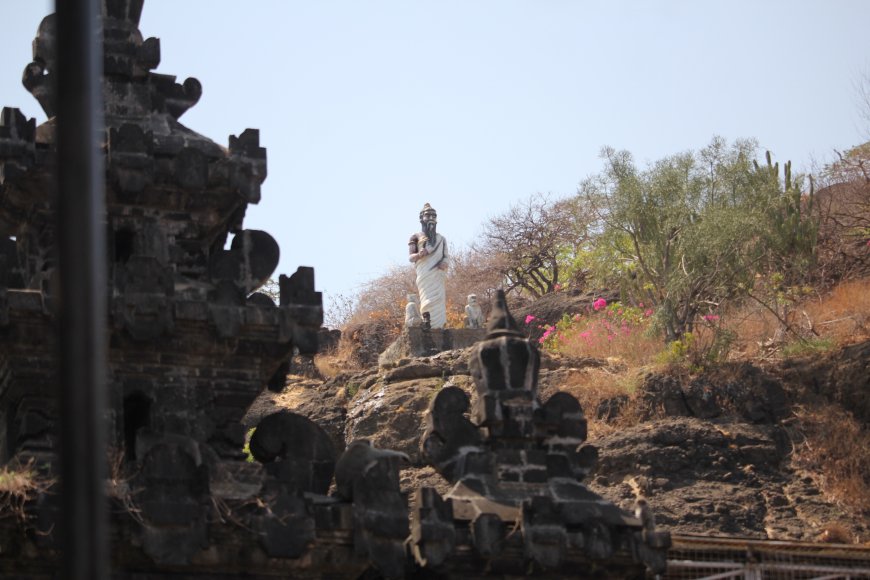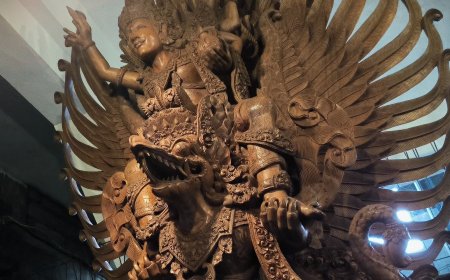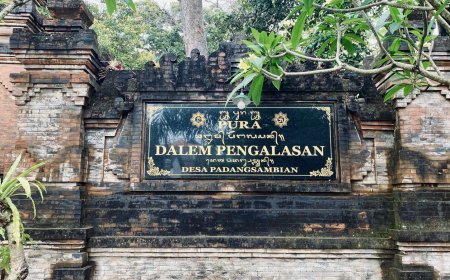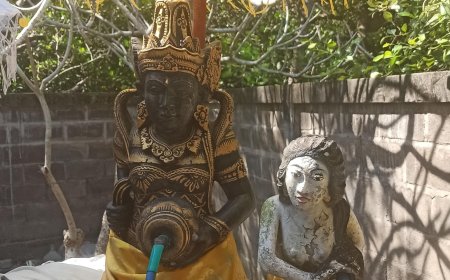Pura Pulaki: The Roots of History and the Spiritual Perpetuity of the Legend of North Bali
Pura Pulaki, a sacred destination in North Bali, offers captivating natural beauty with views of the sea, hills, and the presence of monkey groups. Linked to Danghyang Nirartha's spiritual journey, this temple is also where Mpu Isteri Ktut attained moksha, creating a unique spiritual moment that became the foundation for the construction of this historically and spiritually temple in North Bali. The presence of the sanctified Utamaning Mandala and interaction with local monkeys add to its allure, while the freshwater springs nearby provide refreshment and tranquility for visitors with respect for the sustainability and spirituality of this sacred place.

Danghyang Nirartha Statue (Source: Personal Collection)
The Pura Agung Pulaki, also known as the Pura Petirtaan, is an enchanting sacred destination in North Bali. Located in the village of Banyupoh, Gerokgak District, Buleleng, this temple holds a strategic position right along the Singaraja-Gilimanuk highway. Situated approximately 53 kilometers west of Singaraja city, Pura Pulaki is often visited by Hindu devotees for prayers, especially when traveling from Gilimanuk to Singaraja or vice versa.
Its position at the foot of a hill and facing directly towards the sea offers a breathtaking view. The captivating natural surroundings and the presence of monkey groups around Pura Pulaki add a unique allure for tourists, hence making this place listed among the popular temple tourist destinations in North Bali.
The Pura Pulaki in Buleleng is not only known for its historical sites and natural beauty but also holds a profound connection to the spiritual journey of Danghyang Nirartha. Interestingly, this island also became the place of moksha for Mpu Isteri Ktut, who was the devoted wife of Danghyang Nirartha and is known as Bhatari Dalem Ktut.
This story began when Sri Patni Kaniten, the wife of Danghyang Nirartha, joined her husband on his spiritual journey from Blambangan to Bali. However, upon reaching Pura Pulaki, Sri Patni Kaniten felt unable to continue the journey due to being pregnant. Wisely, Danghyang Nirartha granted permission for his wife to stay in Pulaki. Sri Patni Kaniten pleaded not to continue the journey and was granted permission. Eventually, at Pura Pulaki, Sri Patni Kaniten settled and attained moksha. To this day, she is revered as Bhatari Dalem Ktut.
Besides the story of Mpu Isteri Ktut, Pura Pulaki is also closely related to the journey of Danghyang Nirartha. The rest requested by Sri Patni Kaniten for her husband created a unique spiritual moment. The frustration and patience of Danghyang Nirartha's wife reached its peak when the deities granted the request on the condition that they would not be visible to humans. In a flash of lightning and thunderous roar, the entourage disappeared, transforming into the sacred and bewildered people.
The place where Danghyang Nirartha's wife attained moksha then became the foundation for the construction of Pura Pulaki, a sacred place to honor and worship Sang Hyang Widhi Wasa. This story, along with the natural beauty and magnificent temple architecture, makes Pura Pulaki a destination rich in spiritual meaning and history in North Bali.

Utamaning Mandala (Source: Personal Collection)
Pura Pulaki presents a special feature with the presence of the Utamaning Mandala, the main shrine that is strictly guarded and not to be stepped on by anyone, including the temple priests. This sacred location can only be entered during specific events or ceremonies, such as the ngenteg linggih ceremony, in order to preserve its sanctity.
Besides that uniqueness, Pura Pulaki is also considered a heritage from prehistoric times. The layout and structure of the temple resemble the structures used for worship by prehistoric communities. This assumption was reinforced by the discovery of various stone tools such as grinding stones and axes in 1987.
With black stone ornaments dominating its architecture, Pura Pulaki presents a distinctive beauty on the hill slopes, complemented by an environment enriched by the sound of crashing ocean waves.
The importance of preserving the sanctity of Pura Pulaki is reflected in the rules that are in place, such as the preparation for Banten Pejati. However, it's crucial to ensure that the cover of Utamaning Mandala remains closed to avoid disturbances from the monkeys that often roam around the temple. All rules, except for Canang and Kewangen as prayer instruments, are placed within secured wire areas, thus protecting them from the intervention of these monkeys. Consequently, visitors can enjoy the presence of the monkeys undisturbed, considering the temple as their home.

Pulaki Monkey (Source: Personal Collection)
Pura Pulaki, situated on a steep rocky hillside with the sea stretching out in front of it, offers stunning vistas. The hill, located to the west and forming a small cape, adds an intriguing atmosphere to its surroundings. The natural ambiance combined with stone elements and the sea creates a unique environment at Pura Pulaki.
The presence of monkeys living around the temple becomes an attraction of its own. These animals often gather in the temple courtyard as they receive food from visitors. This interaction creates enjoyable and unforgettable moments for tourists who visit the temple.
Near Pura Pulaki, precisely in Teluk Pulaki Buleleng, there are several freshwater springs available for visitors to drink. The presence of these springs provides refreshment and comfort for visitors, who can enjoy the fresh water while admiring the surrounding beauty. It is important to note that these springs are considered sacred by the local residents, so visitors are expected to maintain respectful behavior and speech while in the spring area or the Pura Pulaki vicinity. Respecting the sustainability and spirituality of this sacred place is an integral part of the meaningful tourist experience at Pura Pulaki.





























































